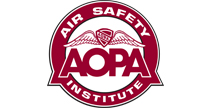Film crew captures density altitude crash
LAX07FA258
 During the hot days of summer, high density altitude can rob an aircraft of lift, thrust, and engine performance. Add to that an overweight airplane, rising terrain, and fickle takeoff winds, and tragedy is all but inevitable.
During the hot days of summer, high density altitude can rob an aircraft of lift, thrust, and engine performance. Add to that an overweight airplane, rising terrain, and fickle takeoff winds, and tragedy is all but inevitable.
On Aug. 30, 2007, an overloaded Beech A36 Bonanza encountered a sudden wind shift shortly after takeoff at Cameron Airpark in Cameron Park, Calif. The airplane lost lift, settled into rising terrain, and flipped violently after striking a boulder. The 2,000-hour pilot and a front-seat passenger were seriously injured. The two rear-seat passengers were killed. The takeoff roll and accident sequence were captured on film by a television news crew.
By noon on the day of the accident, shortly before the flight took off, the temperature had reached 96 degrees F at the airport. Density altitude was calculated to be 4,125 feet msl—nearly 3,000 feet higher than field elevation. The pilot stated that he “mentally” performed a weight and balance after topping off the airplane’s fuel tanks. He also said he had previously performed takeoff-over-obstacle calculations for the airport in similar warm-weather conditions.
Following an uneventful engine runup, the airplane taxied onto Runway 31 and began its takeoff roll. The Bonanza traveled about two-thirds of the way down the 4,051-foot strip before becoming airborne. The aircraft climbed about 40 feet and crabbed to the left. The wings then wobbled and the airplane sank back toward the ground. After sliding about 250 feet along the rising terrain, the Bonanza slammed into a boulder and abruptly flipped over, coming to rest inverted about 700 feet from the end of the runway.
Accident investigators determined that the aircraft weighed approximately 4,095 pounds at takeoff—nearly 100 pounds over the Bonanza’s modified maximum gross weight. Examination of the accident video also revealed shifting wind patterns at the airport, which is surrounded by buildings and located in a slight geographical bowl. During the aircraft’s takeoff roll, the midfield windsock appears limp. At the departure end of the runway, however, foliage can be seen waving in a moderate breeze. According to calculations, the pilot likely encountered an abrupt 10-knot crosswind from the left, possibly with a tailwind component.
The NTSB concluded that the Bonanza’s sudden encounter with a wind shift during the initial takeoff climb resulted in degraded climb performance and a stall/mush condition. Factors contributing to the accident were the airplane’s overweight condition, the high density altitude, the pilot’s inability to compensate for the sudden wind shift, and rising terrain in the departure path.
When preflight planning, it’s important to remember that high density altitude not only increases required runway length, but also can have a dramatic effect on rate of climb. Making matters worse, true airspeed increases with density altitude (relative to indicated airspeed), which means the airplane’s groundspeed will be higher than normal. Together, these factors can make it extremely difficult to outclimb obstructions or rising terrain that, under normal circumstances, would present no problem. Tricky crosswinds are an added concern, further degrading climb performance and decreasing the stability of an airplane that may already be on the verge of stalling.
When high density altitude is a factor, consider the following safety tips.
- Fly in the evening or early in the morning when temperatures are lower and winds are typically lighter.
- Know whether your aircraft climbs more efficiently with the first increment of flaps. Many airplanes do, but results vary and that first notch of flaps may add more drag than lift.
- Be sure the aircraft’s weight is below 90 percent of maximum gross weight.
- Reduce weight by taking on less fuel and flying shorter legs (still allowing at least a golden hour of reserve at each stop).
- Have 80 percent of your takeoff speed at the runway’s halfway point, or abort.